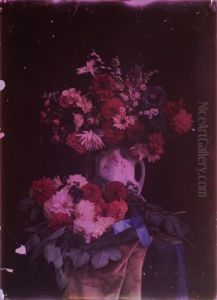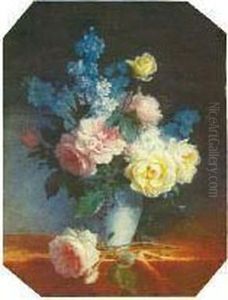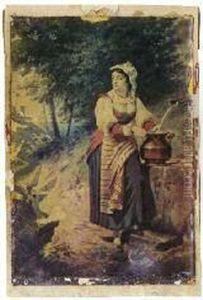Ducos Du Hauron Paintings
Louis Arthur Ducos du Hauron was a pivotal figure in the development of color photography and color printing techniques. Born on December 8, 1837, in Langon, Gironde, France, his innovative work laid the foundational stones for many aspects of modern color imaging. Ducos du Hauron's interest in science and optics, paired with his creative ingenuity, led him to explore the possibilities of reproducing colors through photographic processes.
Ducos du Hauron's most significant contributions came in the late 1860s when he developed and patented several processes for color photography. Among his inventions was the color subtraction method, which is still the basis of nearly all color photographic and printing processes used today. This method involves using the three primary colors (red, green, and blue) to reproduce the full color spectrum in images. He also experimented with color printing, creating the first color print in 1869 by superimposing carbon prints in the three primary colors.
Despite the groundbreaking nature of his work, Ducos du Hauron's contributions were not immediately recognized or profitable during his lifetime. He faced many challenges, including financial difficulties and a lack of support from the scientific community. Nevertheless, his perseverance and dedication to his work continued to drive him forward. In addition to color photography, he made advancements in anaglyph 3D images and motion pictures, further showcasing his broad interest in visual technology.
Louis Arthur Ducos du Hauron passed away on August 31, 1920, in Agen, France. Although he did not receive significant recognition during his life, his inventions and their impact on the fields of photography and printing have been acknowledged and celebrated posthumously. Today, Ducos du Hauron is remembered as a pioneer whose visionary work transformed the way we capture and reproduce the world in color.



